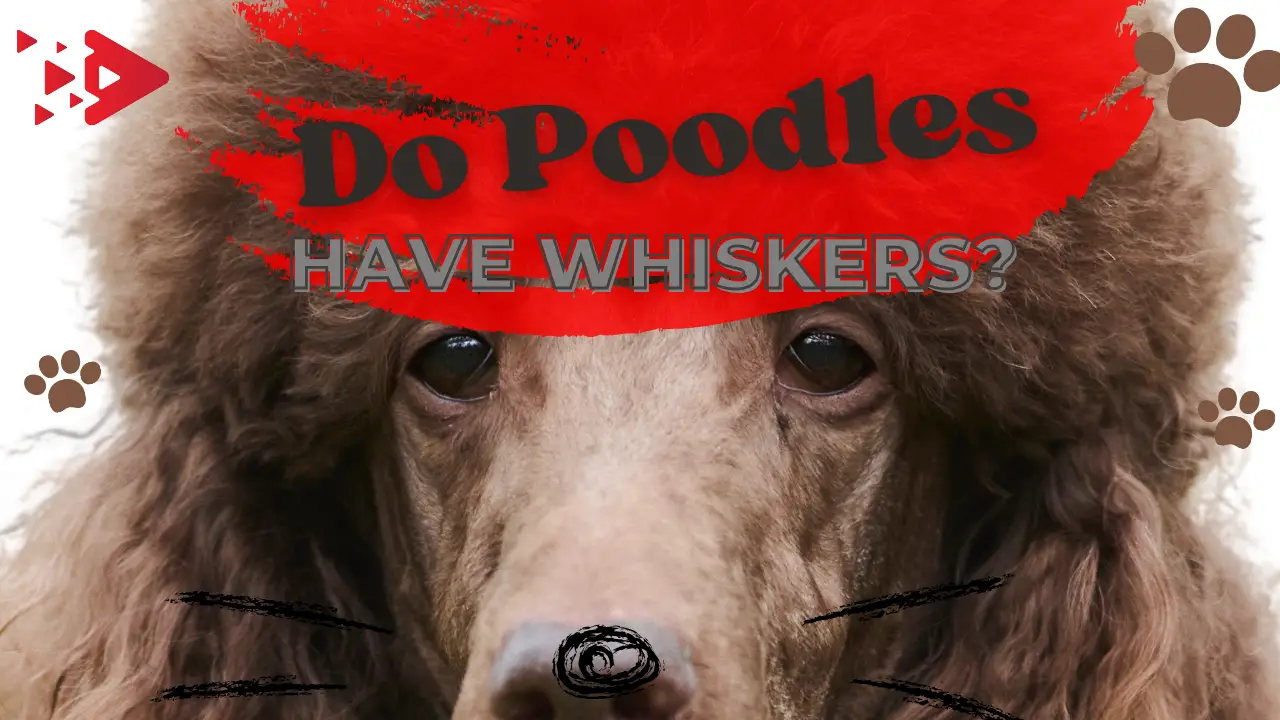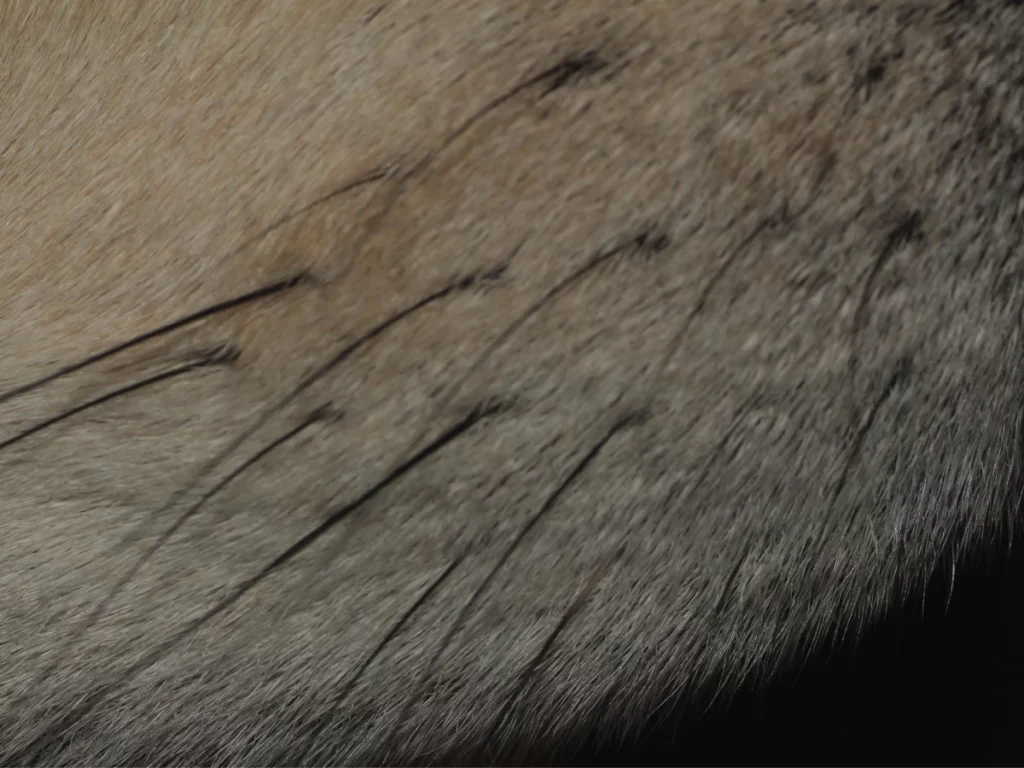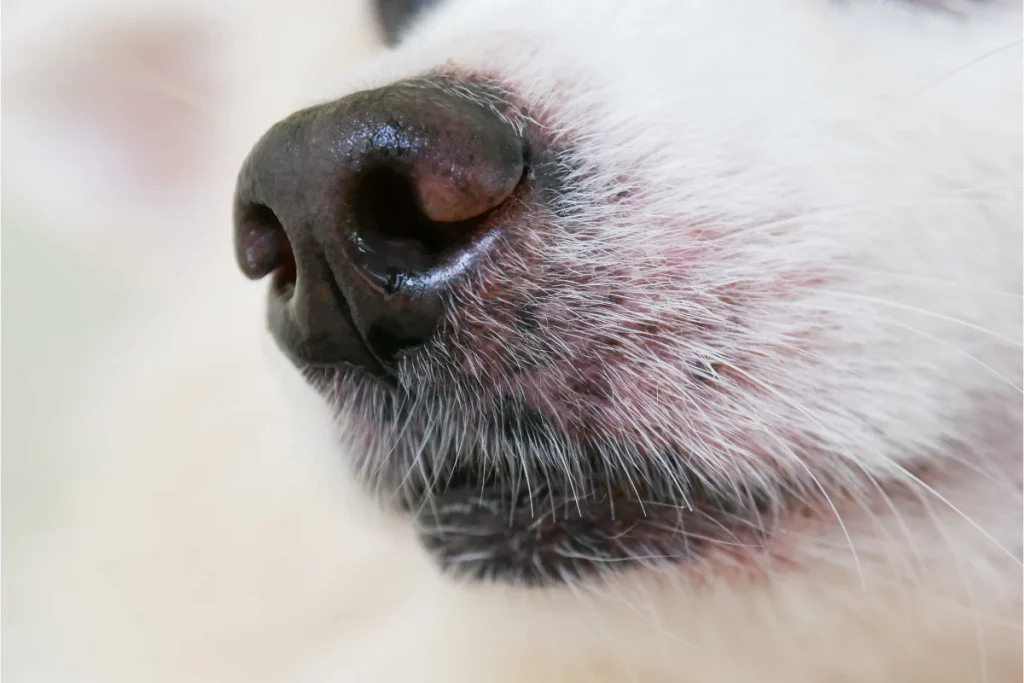Poodles are one of the most popular breeds in the world and for good reason. They’re intelligent, house-trained, loyal, and offer a variety of coat colors to choose from. But did you know that poodles have whiskers too? And just like other animals with whiskers (like cats), they serve an important function for your pet.

Whiskers are long, thin, hair-like fibers that protrude from the sides of your dog’s face. They help your poodle to determine the size, shape, and speed of objects. This is especially important when your dog is navigating in the dark or in low-light conditions. Whiskers also act as a type of radar system. They allow your dog to determine what types of surfaces they’re touching and how close or far away an object may be from them.
What Will You Learn? 👇
Varieties of Whiskers
Whiskers are a rather generic term that is understood by all pet owners. Whiskers, on the other hand, can be divided into four categories based on where they are developed.

Read our Smart Poodles - Smart Tricks eBook for only $2.99
Dive into a treasure trove of engaging tricks and tips designed specifically for your poodle!
- Mystacial Whiskers: When it comes to whiskers, people generally think of mystacial whiskers since they are the most noticeable and are positioned just above your dog’s top lip.
- Supraorbital Whiskers: Above your dog’s eyes, they look like eyebrows. Their duty is to find potential problems that might harm their eyes.
- Interramal Tufts: Moles frequently produce a tuft of whiskers that emerge from beneath the dog’s chin.
- Genal Whiskers: The whiskers on your dog’s cheeks help with peripheral vision and other functions.
What Is the Purpose of Whiskers?

Poodle whiskers are used as sensory organs. The poodle’s hair moves the air around them, and they feel it through their whiskers. This allows them to sense movement and obstacles in their surroundings; it also helps them judge which direction air currents are coming from, which enhances their ability to find scents.
When moving in darkness, poodles rely on the pressure of these furry bristles against the skin for guidance rather than sight or sound.
Dogs, like other animals, use their whiskers to explore their surroundings. Every whisker is encased in a hair follicle that contains blood vessels and nerves. These whiskers are connected to a muscle that allows the poodle to move their whiskers in any direction they choose.
Poodles also use their whiskers for tactile perception. These fuzzy appendages sense the slightest disturbance of air currents and help them determine whether they can fit through narrow spaces or if their bodies will bump into an object while moving around it.
This is especially useful when a poodle is exploring and smells something interesting; he’ll be able to tell if he can get closer without bumping into an object, such as a wall or another dog, by feeling resistance with his whiskers.
Whiskers Can Alert Them to Danger
Whiskers are sensitive to touch since they contain active neurons. These neurons notify your poodle’s brain that something is approaching its face, allowing it to avoid potential threats in the vicinity.
It’s also important to remember that a dog’s whiskers are extremely delicate and sensitive. A dog’s whiskers help to keep him safe from branches and sharp items while out for a stroll, just like human eyelashes. When a dog’s whiskers are damaged, he can’t rely as heavily on them for sensory information, which can be dangerous when exploring the world.
Whiskers can Help them Get Around
Dogs do not have a spectacular sense of sight, which may come as a surprise to you. So, how can they find anything? Whiskers! Whiskers aid in their navigation and escape of obstacles such as walls, furniture, and even people who get in the dog’s way.
Poodles use their whiskers to sense movement and obstacles in their surroundings and to find scents. When moving in darkness, poodles rely on the pressure of these furry bristles against the skin for guidance rather than sight or sound.
This is especially useful when a poodle is exploring and smells something interesting; he’ll be able to tell if he can get closer without bumping into an object, such as a tree or another dog, by feeling resistance with his whiskers.
When a dog is lost, he will tilt his head to the side and use his whiskers to follow the outline of objects around him. This is how dogs are able to walk in complete darkness without bumping into anything.
Whiskers Can Tell You if They Feel Threatened
If your poodle’s whiskers point forward or flare out, he is feeling threatened. You should remove your poodle from the situation and reassure him that he is safe and secure. A poodle’s whiskers are his first line of defense, and they play an important role in his safety and well-being.
Whiskers Can Tell About Their Health
Furthermore, the appearance of your poodle’s whiskers can give you an indication of its general health. Whiskers that are drooping or split indicate a disease state.
If you notice that your poodle’s whiskers fall out and do not grow back in a few weeks, your dog may be suffering from Vitamin deficiency. In this case, you should take your dog to the veterinarian for a check-up.
Can Their Whiskers be Cut?

Poodles have extremely sensitive whiskers which is why it’s important that they are not cut or trimmed without a good reason, as this can cause stress and fear. Show dogs frequently have their whiskers trimmed for the sake of cosmetics. It’s better not to trim a dog’s whiskers because they play an important role. It’s possible that removing a dog’s whiskers will lead to uncertainty and lower spatial awareness.
You can cut your dog’s whiskers if you want to make them look more unique; however, the risk is that it will affect how well their sense of touch works. If you’re considering this procedure on your own pet, be sure to check with a veterinarian first!
Do Poodle Whiskers Grow Back if Cut?
Yes! Whiskers, like other hairs, will grow back. If you want your poodle to be clean and attractive, its whiskers can be trimmed during a grooming session.
There’s no need to freak out if a groomer accidentally cuts your poodle’s whiskers off. If the whiskers have been cut at a shorter length, they may take a few months to grow back. But your poodle’s whiskers will return!
Conclusion
We’ve learned that poodles do indeed have whiskers that are used for sensory purposes. In short, whiskers play an important role in a dog’s life by enhancing their senses of smell, touch, and movement. They act as an extra pair of eyes and help keep dogs safe from harm while navigating their surroundings.
So the next time you see your poodle twitch his whiskers, you’ll know that he’s doing just what he’s supposed to – taking in all the information he can about his environment!
Marko is the founder and author at PoodleHQ, where he blends profound expertise with formal training in Animal Behavior and Canine Genetics. With multiple generations of poodles under his care, he’s a breed connoisseur, honored with the Canine Care Excellence Award and lauded by the International Pet Enthusiasts Association.

